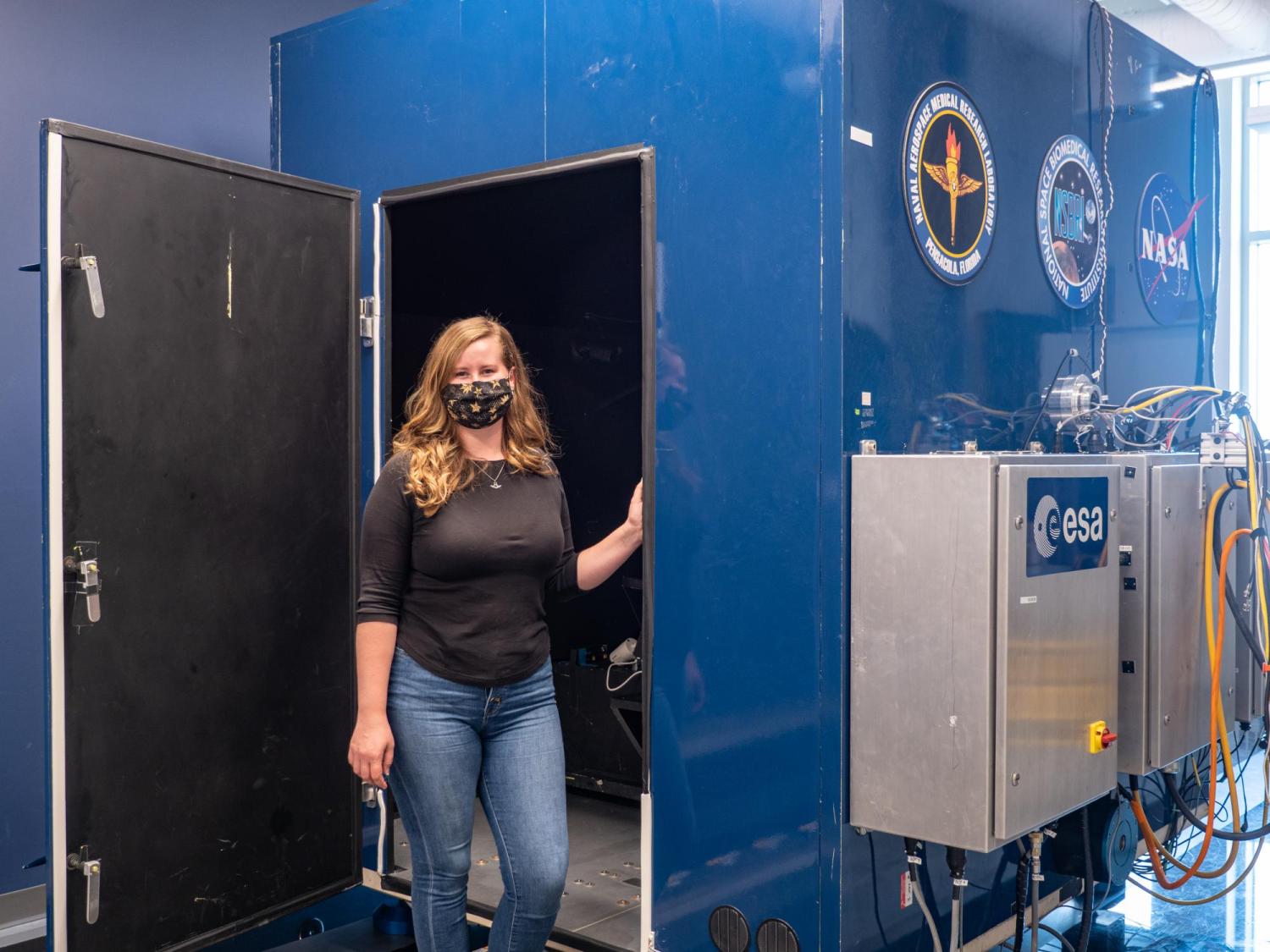Return to research: Improving astronaut health for next gen space missions

Life is returning to some semblance of normal for students in Assistant Professor Torin Clark’s laboratory on campus. A faculty member in the Ann and H.J. Smead Department of Aerospace Engineering Sciences, his team’s research focuses on astronaut health on long-term space missions. When much of campus shut down due to the coronavirus pandemic, most of their work came to a standstill – some of Clark’s equipment takes up entire rooms and is not conducive to “work from home.”
With new health policies and procedures in place at CU Boulder, research activities are resuming in modified form. Clark shared his experience with returning to research:
How is your lab restarting research after so much time away?
We weren’t doing much research in the Aerospace Building for about three months. We have a lot of really large equipment that is designed to simulate conditions in space that we can’t work on outside the lab – our Aerospace Research Simulator or Dream Chaser capsule, the tilt translation sled, the human centrifuge.
Our work focuses on astronauts and aerospace applications, but it has impacts for health here on Earth, particularly connected to falls in the elderly, which are a leading cause of hospitalizations and even death. It’s related to your inner ear and vestibular system, which are critical to balance.
Getting back into the building even in a limited way is really positive. Even a small amount of access enables a lot. We can get in for a few hours to run experiments and then do data analysis and software from home.
What are the biggest challenges as you restart? How are you addressing them?
The delays are tough, particularly for shorter-duration projects. We have research with Lockheed Martin that will be delivered in November that will be a challenge timing-wise. For longer-term projects we've been able to pivot and delay some hands-on work to emphasize computation and modeling for the time being.
What precautions are you taking to stay safe?
We're coordinating schedules so there's not too many people. There are helpful guidelines from campus and the aerospace department. We have very low occupancy and are maintaining physical distancing, always wearing masks, and sanitizing work spaces before and after use. In addition, there are general restrictions on building access and a daily health history questionnaire.
As a team we had to get everyone on the same page and make sure everyone understood the procedures. We've had teleconferences and email exchanges to discuss logistics. I have about 15 students total including undergraduate researchers, but only a few of them are in the building per day.
What changes, postponements or issues are you facing in your research?
We rely on human subjects for some of our work and have just recently received approval to start that again. Thankfully the research that we're doing, subjects don't have to take off masks and can maintain physical distance. But in some cases the types of human subject experiments we perform require multiple operators in addition to the subject, which is constrained by our room capacity restrictions.
Have you noticed any benefits to your time away from campus?
In normal times there can be a desire to jump in and run experiments as quickly as possible for data collection because you're excited and want to see the results, but we're being much more thorough and thoughtful. It is helping us develop stronger models and theories to do experiments later, which should lead to better research long-term.

